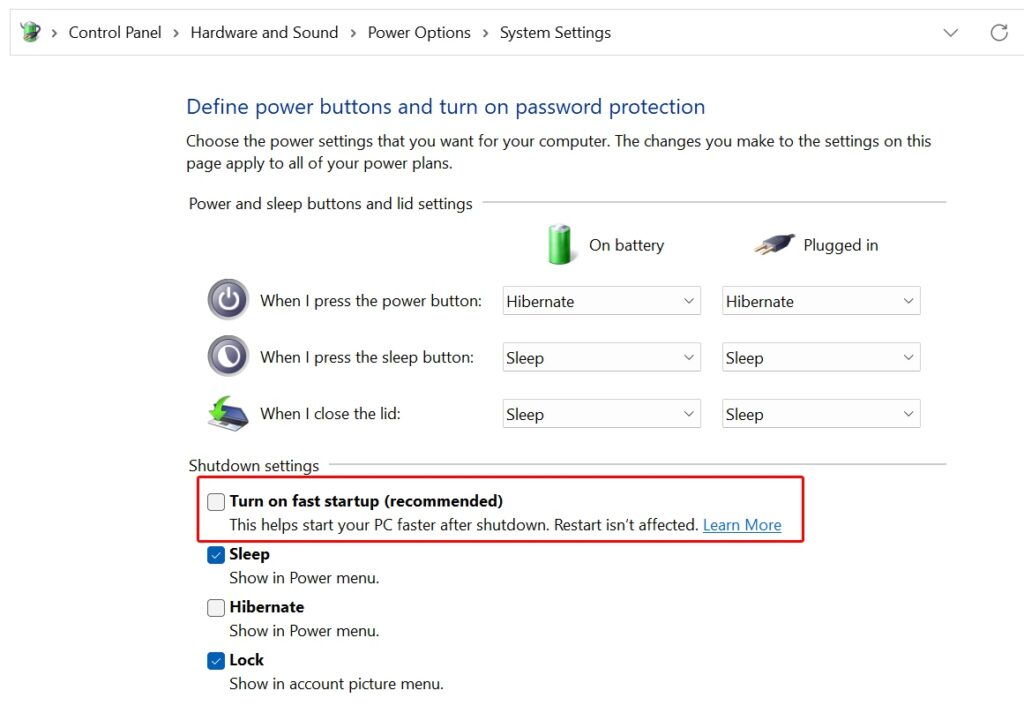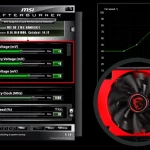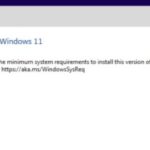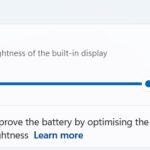If you’re an IT specialist or part of a Managed Service Provider team, you know the drill: understanding and tweaking system features comes with the territory. One such feature is Windows Fast Startup, a.k.a Hiberboot or Fast Boot, available in both Windows 10 and Windows Server 2016. While it’s generally a time-saver, there are situations where you might want to disable it. Stick around, as we’ll break down everything you need to know about Fast Startup—what it is and when you might want to turn it off,
Table of Contents
What is the Fast Startup?
Fast Startup is a feature in Windows designed to help your computer boot up more rapidly. It saves some of your system information in a file when you shut down.
Then, the next time you start your computer, Windows uses that saved data to boot up more quickly.
Think of it as putting your computer into a deep snooze mode rather than fully turning it off.
The Downsides of Fast Startup
Though it sounds great on the surface, Fast Startup isn’t without its drawbacks. For one, it can cause issues with dual-boot systems that run more than one operating system. Also, if you’re a fan of using external devices, Fast Startup can sometimes prevent them from being recognized immediately when your computer wakes up. If you’re running into these issues, you might want to consider deactivating Fast Startup.
Turning Off Fast Startup: The Manual Way
Deactivating Fast Startup is simple, and you can do it right from your computer’s Control Panel.

- Open Control Panel: Hit the ‘Windows’ key, type in ‘Control Panel,’ and press ‘Enter.’
- Navigate to Power Settings: Once the Control Panel is open, click on ‘Hardware and Sound,’ and then click ‘Power Options.’
- Advanced Power Settings: On the left-hand side, you’ll see an option that says ‘Choose what the power buttons do.’ Click that.
- Edit Settings: You might notice the settings are greyed out. To access them, click on ‘Change settings that are currently unavailable.’
- Untick Fast Startup: Scroll down and find the ‘Turn on fast startup’ option. Simply untick the box next to it.
- Save and Close: After unticking the box, click on the ‘Save changes’ button. You’re good to go.
Deactivate Fast Startup via PowerShell
If you’re someone who prefers using the command line or you’re looking to script this change across multiple machines, PowerShell is a more efficient way to do it.
- Open PowerShell as Admin: Right-click on the Start button and select ‘Windows Terminal (Admin).’ Once in, type ‘PowerShell’ and press ‘Enter.’
- Input the Command: In PowerShell, input the command
powercfg -h offand hit ‘Enter.’ - All Set: You’ve just disabled Fast Startup. It’s that easy.
What Happens When You Turn Off Fast Startup?
Turning off Fast Startup on a Windows system will make your computer take longer to boot up. The feature essentially saves a snapshot of system files and drivers, allowing the computer to boot more quickly. Without it, all these elements have to be loaded anew each time you start your computer, leading to an extended boot time.
In terms of system resources, you’ll likely notice a brief spike in CPU and disk activity during the boot process. This is because all drivers, services, and system processes are initialized from scratch, which requires more system resources than when Fast Startup is enabled.
Disabling Fast Startup can make troubleshooting easier. If you’re experiencing system issues like crashes or software conflicts, turning off this feature allows you to start each session with a clean slate. This can simplify the diagnostic process, as the system state isn’t carried over from the previous session.
Some software might also function differently or more reliably when Fast Startup is turned off. This is particularly true for software that automatically launches at startup or software that closely interacts with hardware drivers.
System updates can also be affected by Fast Startup. Some updates might require a full shutdown to install correctly. By turning off Fast Startup, you ensure that all pending updates are applied during the next startup.
If you’re using a dual-boot system with more than one operating system, Fast Startup can sometimes cause issues, especially when mounting shared partitions. Disabling it can help mitigate these problems.
Fast Startup is a form of hibernation that generally uses less energy during boot-up. By disabling it, you may notice a slight increase in energy consumption when you start your computer.
Dual Perspectives: To Use or Not to Use Fast Startup
While Fast Startup can save you a few precious seconds when you’re in a rush, it can also be a source of minor complications. If you’re tech-savvy, dealing with these issues might not be a big deal.
However, if you’re not a big fan of troubleshooting, disabling this feature could save you some headaches down the road.
So, there you have it. Two straightforward methods for disabling Fast Startup and a lowdown on what you can expect once it’s off. The choice is yours to make based on what suits your needs best.
Whether you opt for a slightly faster boot time or prefer to sidestep potential issues, you now have the know-how to tailor your Windows experience accordingly.





